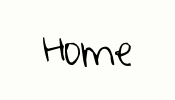
Mushroom identification is hard.
Very hard.
It takes years to develop the skill to forage fungi on your own, and even then it is common to encounter specimens that seem to fit no category.
However, it can be done, quite obviously, or we would never have discovered the delicious mushrooms we consume regularly.
The first step is to understand the key parts of a mushrooms form:

Noting key characteristics of a mushroom in the field can save you a world of trouble. How frustrating would it be to collect dozens of fungi, and traipse miles back home to discover that because the annulus ('ring' in above diagram) is too prevalent - this isn't some tasty treat, it's some deadly treat?

Next, you need a mushroom foraging kit. Carpenter recommends taking these items with you:
*Wicker Basket for carrying fungi (never put mushrooms in a plastic container, they sweat and begin to decay almost immediately)
*digging tool (a common garden spade/trowel works wonderfully)
*brush (preferably very soft) for removing dirt and litter without damaging the fungi
* knife
*magnifying glass (optional, but very helpful to those of us who don't have 20/20 vision)
*wax paper bags for organization (useful not only for carrying, but also for separating specimens)
These books are also highly recommended by Carpenter:
All the Rain Promises and More

Mushrooms Demystified

Steps to Collect and Identify
- Dig up entire mushroom, including the base. Also take some of the leaf litter surrounding the mushroom and keep that as well.
- When possible, attempt to collect at least three stages of each mushroom (i.e. baby, young, and mature), this can make identification much easier.
- Make note of the habitat in which the fungi is growing: is it in the grass or dirt? Is it growing near other plants or is it isolated?
- Is the mushroom growing out of the ground or is it stemming from wood? Be sure to check under the layer of leaf litter to see if the fungi is growing from a buried log or branch. This can be key to identification.
- Note and staining or bruising when the fungi is rubbed or cut. Some specimens will exude a pleasant or noxious scent, some will turn blue or red when rubbed.
- Make note of any distinctive odor.
- Take a spore print with a mature mushroom (remove stem and place cap of mushroom, gill side down, on a white piece of paper/paper towel - this will provide a 'print' of the spores from the gill, giving a more accurate spore color).
- There are further steps for identification, including biting and chewing a small piece of the mushroom to sample taste, but I won't go into those. The last thing I need is for some Darwin Award candidate to read my blog and decide they can taste test the mushrooms growing in their back yard.
- And finally, take the mushrooms to a professional. Don't ever eat a mushroom without having it identified by an outside source. That's just asking for an uncertain fate.
Finally, take note of the immediate surroundings of the mushroom. Many mushrooms maintain a mycorrhizal relationship with trees or other organisms. For instance, some kinds of mushrooms benefit from growing near pine trees, others prefer oak. The roots of the mycelium body intermingle with the roots of the tree, passing or exchanging nutrients. In fact, Carpenter related an anecdote about an instance in Australia with Monterey Pines. Apparently some people decided they loved Monterey Pine trees so much they absolutely had to have some home in Australia. They took some shoots back with them, and though they grew, they didn't perform nearly as well as those in Monterey. They inquired from some scientist/local guru/hippie (?) in Monterey why their trees weren't growing like they should be and were told that Monterey Pines were dependent upon a certain type of fungus for successful growth. Sure enough, the Australians brought back some of the fungi and their trees perked right up.
I have no idea whether or not this actually occurred, but it should illustrate the need to identify not only the mushroom, but the surrounding organisms as well. After all, misidentifying one mushroom could lead to a one way trip to the county morgue, so it's worth it find out the difference between a pine and an oak tree.
Next up are some of the mushrooms my class found on our hike through Garland Ranch Regional Park.
This is an Amethyst Mushroom Laccaria amethystea

This is the same species, but mature

I'm not quite sure what these were, but they were one of my favorite non-edible ones we found. They're just so adorable...

Again, I don't know what this guy is, but he smelled deliciously of almonds. Not 'like' almonds, but exactly like an almond croissant or marzipan. So much so that I nearly made some almond madeleines when I got home.


This one was unfortunately inedible, it looked so big and tasty. Held in the hand of a lovely fellow named Jerome. He and his wife were great fun.

Finally, this was my least favorite of all of the mushrooms we found. I absolutely love the colors in the stem, but if you look very closely you can see tiny black dots all over the mushroom - those were creepy crawly little bugs that swarmed over your hand in seconds. It was effing gross.

And so that ends my amateur musings over mycology. Perhaps one day I'll be able to forage on my own. That's just as likely as my actually buying Phil Carpenter to do so for me though. (But hey Phil, if you're interested...) I'd like to thank all the lovely people at Garland Ranch Regional Park, Joe Narvaez, Ranger John (sorry, that's all I ever heard you called - thanks for the roaring fire though!)and others. Thanks to Phil Carpenter for a lovely and informative class. And last, thanks to all the really cool people I met in the class (Hi Jill!), hopefully I'll see you all at one in the future?








6 comments:
I can never go mushroom-foraging: I'm pretty sure I'll eat the wrong mushrooms! Fabulous pics of the shrooms.
Was the almondy one edible? That would be fantastic.
My mushroom teacher said, "You can eat any mushroom... once."
js - thanks!
cookie - you make me lol, and yes, the almond one was edible - and effing delicious
Great photos! Did they talk about making spore prints for identifying?
I really feel very hard to recognize the mushrooms which can eaten and which cannot. This i feel the difficult job. Thanks for sharing this lovely article.
Hello,
This is really very interesting and informative blog post found here... Keep posting.....
Post a Comment